11 Companion Plants That Will Help Your Hibiscus Flourish
Selecting the right companion plants is key if you want your hibiscus to thrive. These plants can help improve growth, attract beneficial pollinators, and keep harmful pests at bay. You can create a healthier and more vibrant garden by choosing plants that share similar growing needs or offer natural pest control. Read on to discover the best companions that will enhance the beauty and health of your hibiscus.
This post may contain affiliate links, which helps keep this content free. Please read our disclosure for more info.
Marigolds

Marigolds are a top companion for hibiscus because they naturally repel harmful pests such as aphids, whiteflies, and nematodes. Their strong scent confuses and deters these pests, preventing them from damaging your hibiscus. Marigolds are especially helpful in keeping aphids at bay, which are known to attack hibiscus leaves and flowers. By planting marigolds near hibiscus, you can reduce the need for chemical pesticides, promoting a healthier garden ecosystem.
In addition to their pest-repelling abilities, marigolds also attract beneficial insects like ladybugs and lacewings. These insects feed on aphids and other harmful pests, helping maintain a balanced and pest-free garden. Marigolds thrive in similar full-sun conditions as hibiscus, making them easy to grow together. Their bright and colorful blooms complement hibiscus, adding vibrancy to your garden while supporting its overall health.
Basil
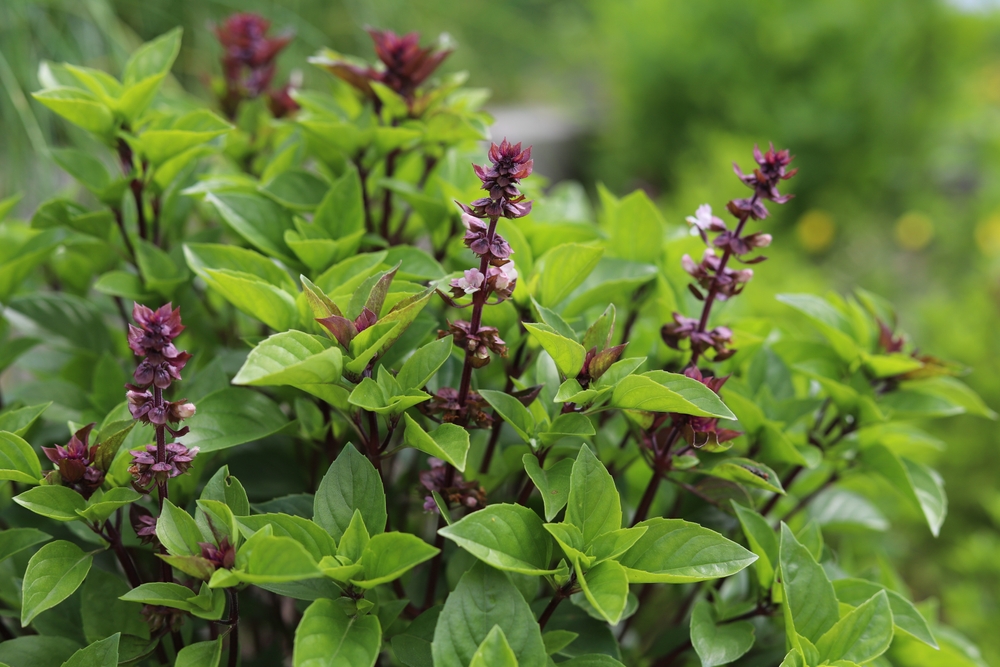
Basil is a fantastic companion for hibiscus, as it shares similar growing needs like warm temperatures, full sun, and well-draining soil. The strong, aromatic scent of basil helps deter pests such as mosquitoes, aphids, and whiteflies, which can be problematic for hibiscus plants. By planting basil near hibiscus, you can create a natural pest barrier, reducing the risk of pest damage while promoting the health of both plants.
Basil is also known to attract beneficial pollinators like bees and butterflies, which play a crucial role in supporting the growth of your hibiscus. These pollinators help fertilize the hibiscus flowers, leading to better blooms. Additionally, basil’s ability to repel pests and attract pollinators makes it an ideal herb to grow alongside hibiscus, especially in the summer months when both plants thrive in the heat.
Nasturtiums
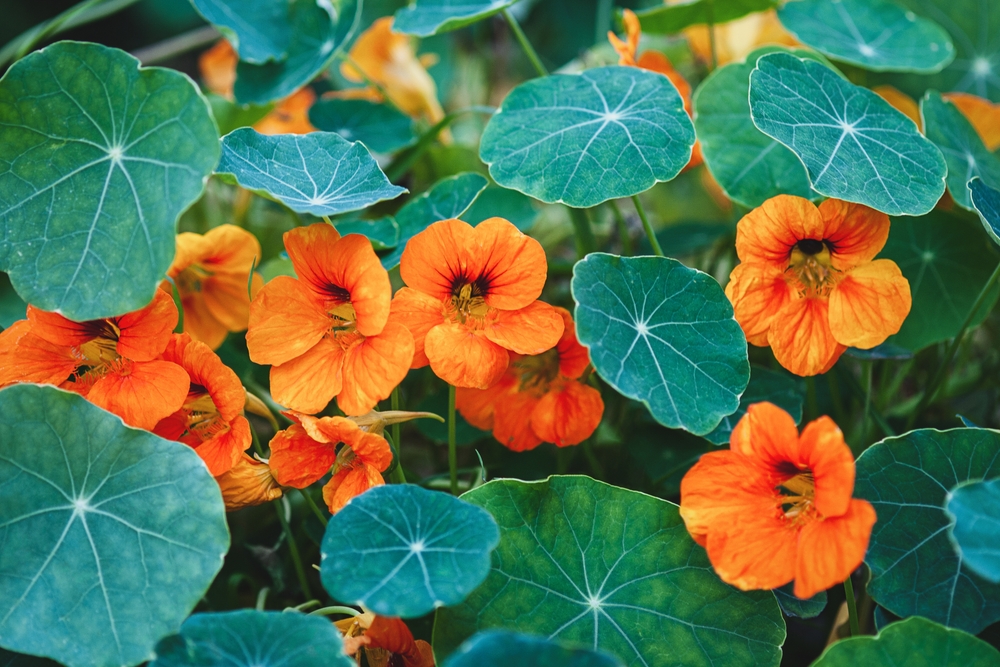
Nasturtiums are an excellent companion for hibiscus because they act as a trap crop for aphids, drawing these pests away from your hibiscus. Aphids are attracted to the lush, tender foliage of nasturtiums, sparing your hibiscus from damage. This allows your hibiscus to grow without the threat of aphid infestations, which can distort leaves and cause yellowing. Nasturtiums also help attract beneficial insects like ladybugs, which feed on aphids and keep pest populations under control.
In addition to their pest-repelling qualities, nasturtiums are easy to grow and do well in the same conditions as hibiscus, full sun and well-drained soil. They also add a splash of color to your garden with their bright, cheerful flowers, creating a beautiful and pest-free environment. Planting nasturtiums alongside hibiscus not only enhances the aesthetic appeal of your garden but also contributes to a healthy, thriving ecosystem.
Lavender
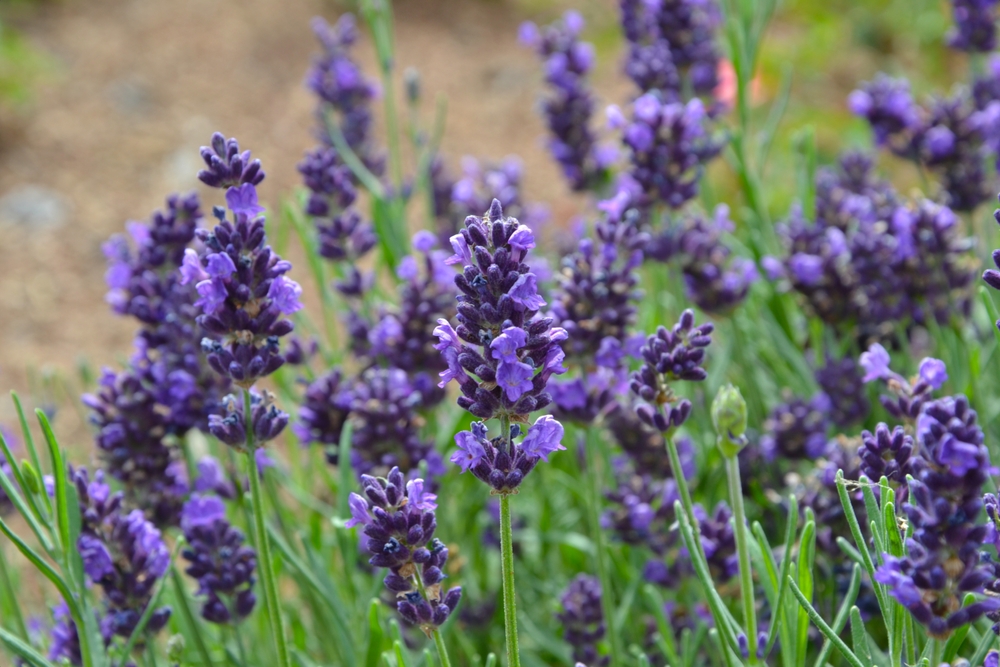
Lavender is a highly beneficial companion plant for hibiscus due to its ability to repel a wide range of pests, including mosquitoes, moths, and flies. The strong fragrance of lavender helps mask the scent of hibiscus, making it harder for pests to locate their target. By planting lavender near your hibiscus, you can naturally deter pests while enjoying the calming scent of lavender in your garden.
In addition to its pest-repelling properties, lavender attracts pollinators such as bees, which are vital for the growth and reproduction of your hibiscus. Lavender thrives in well-drained, slightly alkaline soil and requires full sun, conditions that are similar to what hibiscus plants need. Growing both lavender and hibiscus together creates a harmonious garden that supports pollination while keeping harmful insects away from your hibiscus flowers.
Bee Balm (Monarda)

Bee balm is a perfect companion for hibiscus as it shares similar growing conditions, such as a preference for full sun and moist, well-draining soil. The bright, colorful flowers of bee balm attract bees and other beneficial pollinators that also visit hibiscus flowers. This ensures that both plants benefit from increased pollination, leading to healthier blooms and better overall growth.
Bee balm also helps repel pests like Japanese beetles, which are known to be attracted to hibiscus. The aromatic oils in bee balm’s leaves and flowers make it an effective natural deterrent for these pests. By planting bee balm near hibiscus, you can protect your hibiscus from beetles and other garden pests while encouraging the presence of pollinators, which ultimately benefits the entire garden.
Garlic
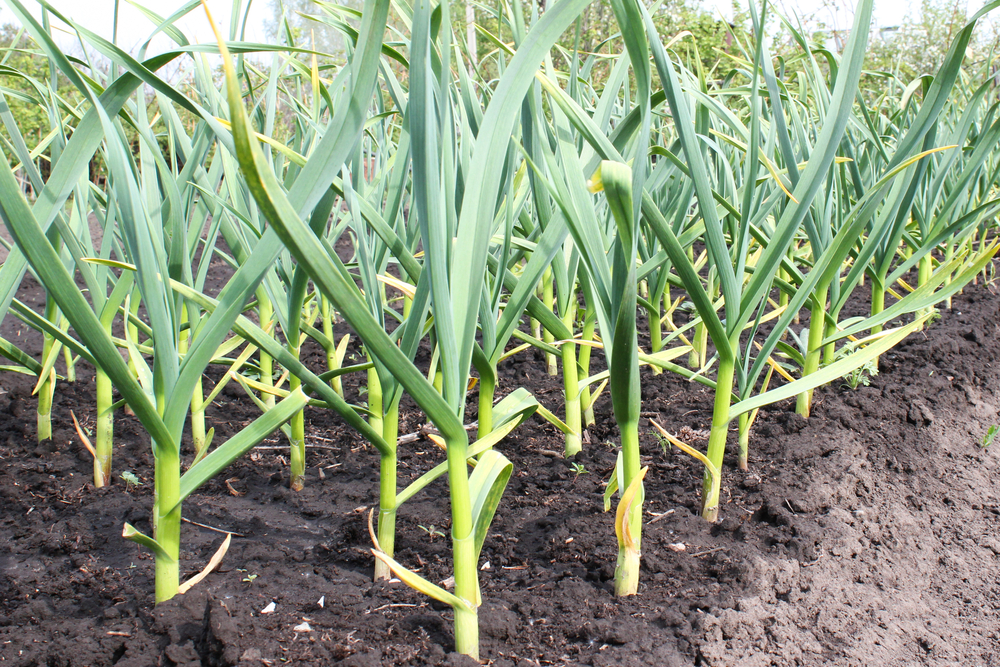
Garlic is a natural pest repellent that works well when planted near hibiscus. Its strong odor deters pests like aphids, spider mites, and mosquitoes, which can harm hibiscus plants. Garlic’s underground bulbs release sulfur compounds that not only repel pests but also promote healthier soil. When you grow garlic next to your hibiscus, it can help keep harmful insects away, allowing your hibiscus to flourish.
Additionally, garlic’s ability to improve soil health benefits hibiscus, as it enriches the soil with nutrients while reducing the likelihood of pest infestations. Garlic thrives in full sun and well-drained soil, much like hibiscus, making it an easy companion plant. Together, they create a thriving, pest-free environment that supports the growth of both plants.
Chives
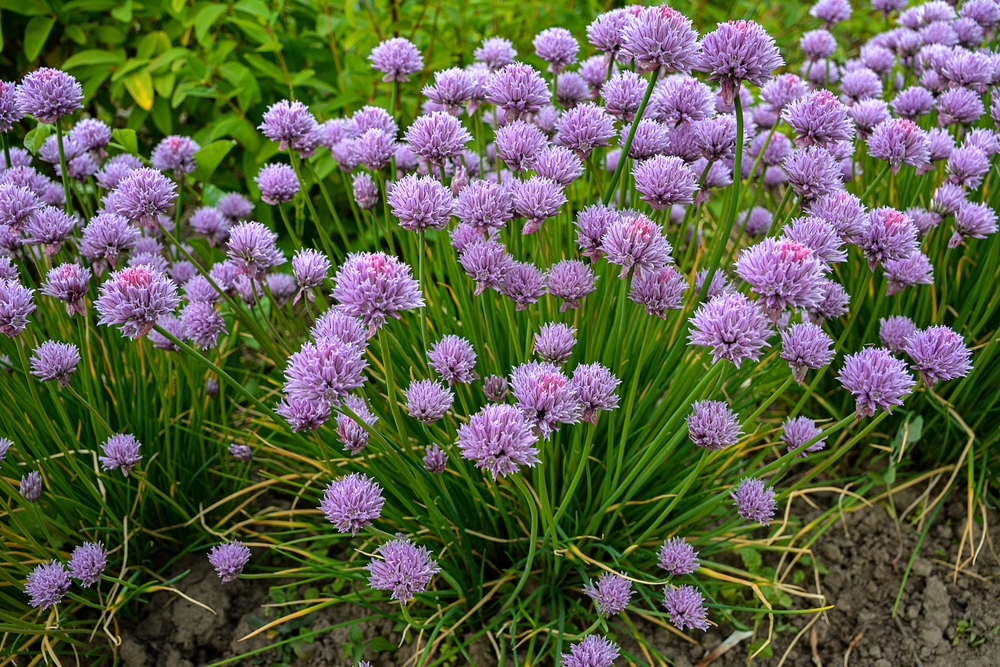
Chives are a great companion plant for hibiscus because they help repel pests like aphids, caterpillars, and Japanese beetles. These pests are often attracted to hibiscus flowers and foliage, but chives’ strong aroma makes them less likely to approach. The sulfur compounds in chives work as a natural deterrent for many garden pests, protecting hibiscus from damage.
In addition to their pest-repelling benefits, chives are easy to grow and thrive in the same full-sun, well-draining soil that hibiscus prefers. They also attract beneficial pollinators like bees, which are essential for hibiscus pollination. By planting chives near your hibiscus, you can enjoy both a natural pest control solution and a lovely addition to your garden that enhances the health of your hibiscus.
Sunflowers
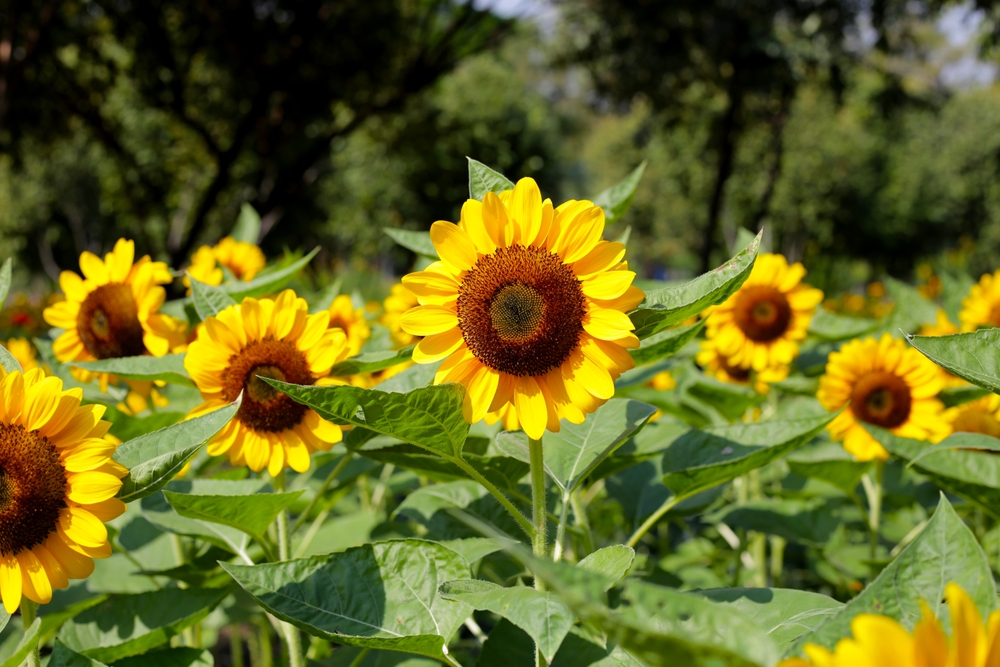
Sunflowers are an excellent companion for hibiscus because they attract pollinators, such as bees and butterflies, which also benefit hibiscus plants. The large, vibrant flowers of sunflowers provide a nectar-rich source for these beneficial insects, helping to increase the pollination rates of your hibiscus flowers. Sunflowers also act as a natural pest repellent, as their height and broad leaves can create a physical barrier that discourages pests from reaching the hibiscus.
Moreover, sunflowers share similar growing requirements with hibiscus, such as a preference for full sun and well-drained soil. Their tall, sturdy stems can also provide some shade to hibiscus plants during the hottest parts of the day, protecting them from heat stress. Planting sunflowers next to your hibiscus not only attracts pollinators but also provides a supportive environment for both plants to thrive.
Yarrow

Yarrow is an excellent companion plant for hibiscus due to its ability to attract beneficial insects like ladybugs, lacewings, and parasitic wasps. These insects feed on pests that could harm your hibiscus, such as aphids and caterpillars, helping to keep pest populations under control. Yarrow’s umbrella-shaped flower clusters provide a haven for these predatory insects, contributing to a more balanced garden ecosystem.
Yarrow also thrives in the same sunny, well-drained conditions as hibiscus, making it an easy plant to grow alongside your hibiscus. Its drought-tolerant nature ensures it can coexist with hibiscus even in less frequent watering conditions. The addition of yarrow to your garden supports both pest control and pollination, leading to a healthier hibiscus plant.
Zinnias
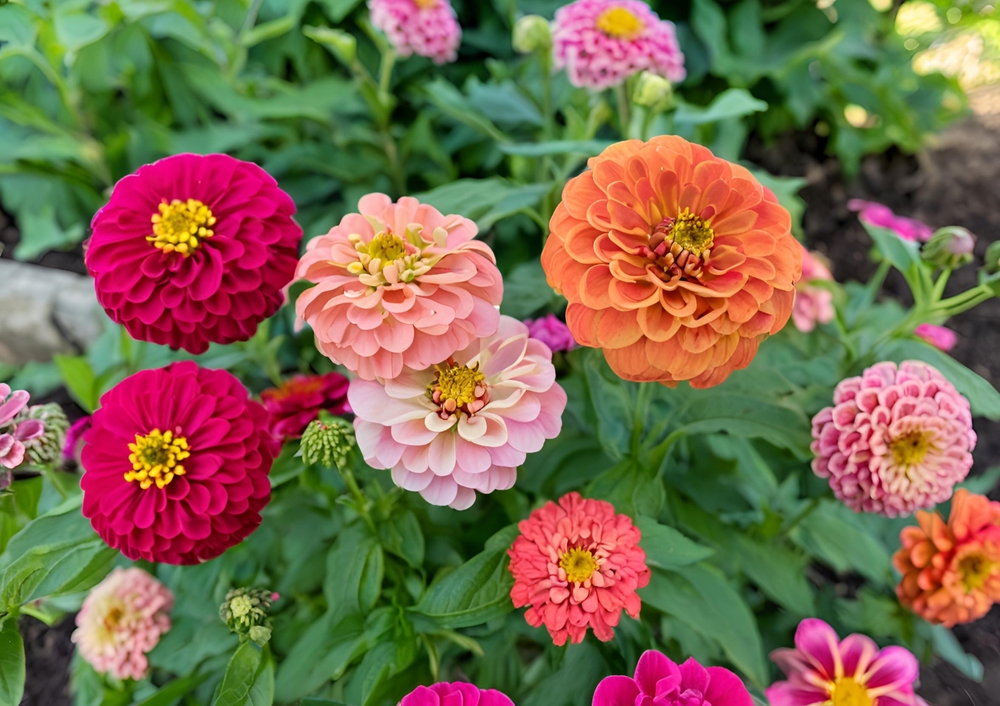
Zinnias are a colorful, vibrant companion plant for hibiscus that attract pollinators such as butterflies and bees. These insects play an essential role in pollinating hibiscus flowers, leading to improved bloom production. Zinnias also provide a burst of color in the garden, creating a visually appealing contrast to the large, showy flowers of hibiscus.
In addition to attracting pollinators, zinnias help keep pests like aphids and leafhoppers away from hibiscus. The bright, daisy-like flowers of zinnias draw the attention of beneficial insects, which help keep pest populations in check. Zinnias thrive in full sun and well-draining soil, much like hibiscus, making them a great companion plant for a healthy, thriving garden.
Cilantro

Cilantro is another herb that works well alongside hibiscus, as it attracts beneficial insects such as ladybugs and parasitic wasps. These insects help control pest populations, such as aphids, which are known to damage hibiscus plants. Cilantro also helps improve the overall health of the garden by attracting pollinators, which benefit hibiscus by promoting better bloom production.
Cilantro thrives in the same sun and soil conditions as hibiscus, making it a low-maintenance companion plant. Its fresh aroma repels some common pests, and its flowers provide nectar for pollinators. By planting cilantro near hibiscus, you can create a more balanced and sustainable garden that supports both plants’ growth.
This article originally appeared on Avocadu.
